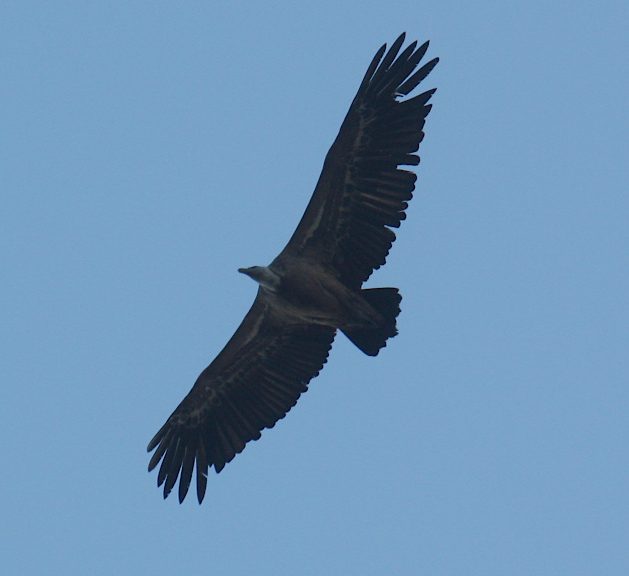
Merida
I’d always wanted to visit the famous Roman ruins in Merida and Jackie had always wanted to see the Griffon Vultures which live around the Spanish/Portugal border near Alcantara, so we decided to include both, and a trip to Elvas on the way back, in October 2020.
Firstly, we headed to the Spanish border and the Parque Natural de Tejo International, or rather specifically, the small town of Salvatero de Extremo where we knew there were some vultures. As it happened before we even reached the town we stopped the car and there were a bunch of them circling overhead, and not very far overhead either.

Just as well we saw them before we got to Salvatero de Extremo. We parked the car and then walked about a kilometre to the viewpoint overlooking the gorge of the Rio Erges (which also marks the border) which is supposed to be a great spot to see vultures – we saw some in the far distance but none nearby. A good view to the Castillo de Peñafiel on the other side of the river though. It was quite interesting to see cork oaks recently debarked and some interesting stone buildings. Surely too small to be old dwellings?
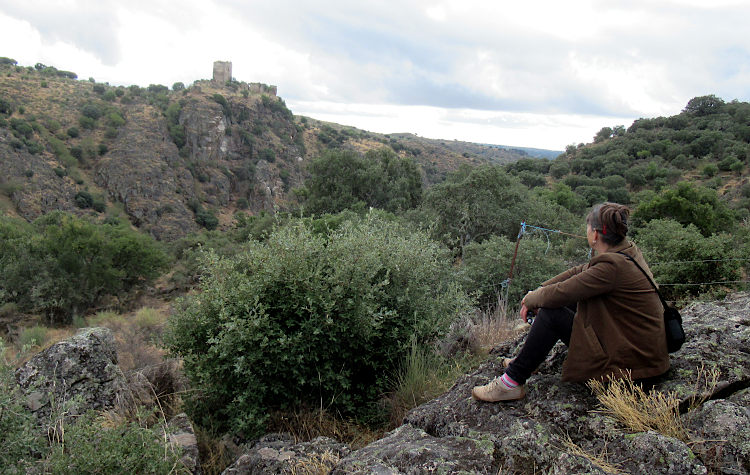
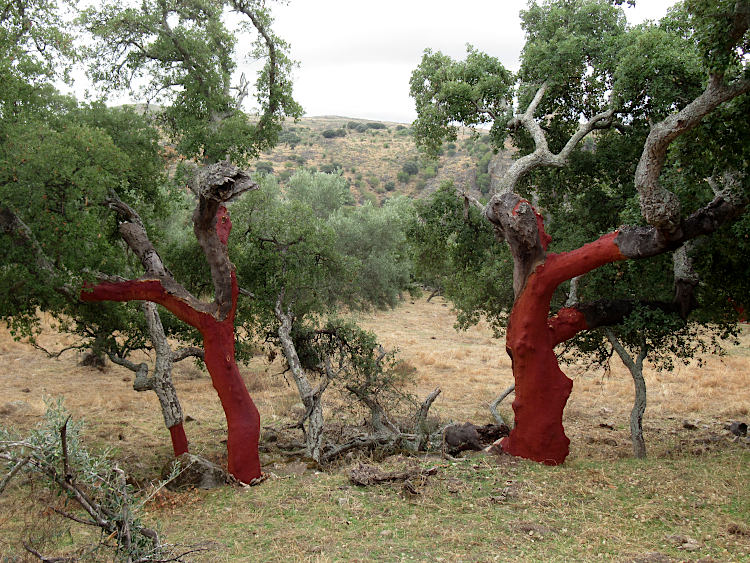
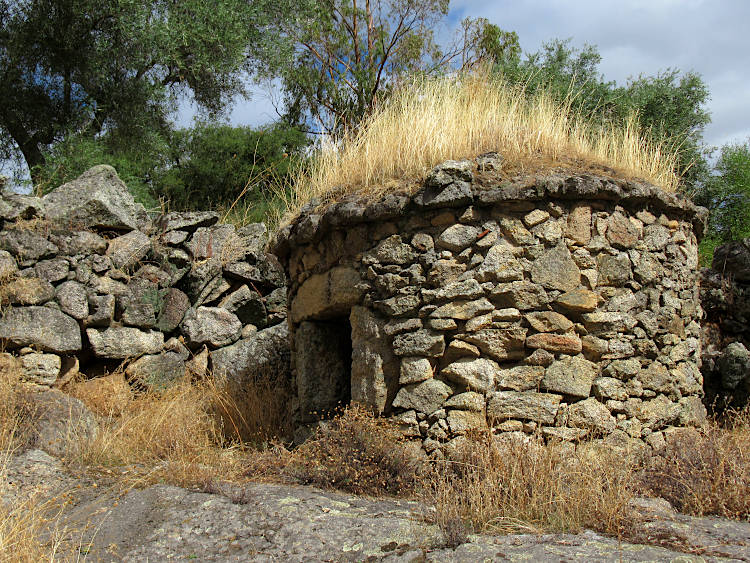
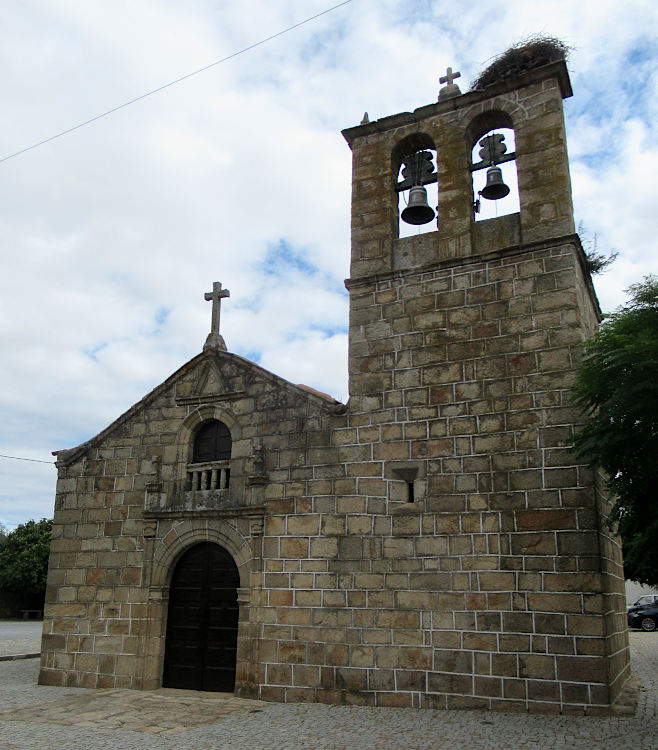
Back on the road and we crossed the border at the Roman bridge at Segura. Here we saw more vultures but this time circling right above our heads. So close we could hear their wings beating. I was so mesmerised by the sight that I didn’t get my camera out to take any photos!
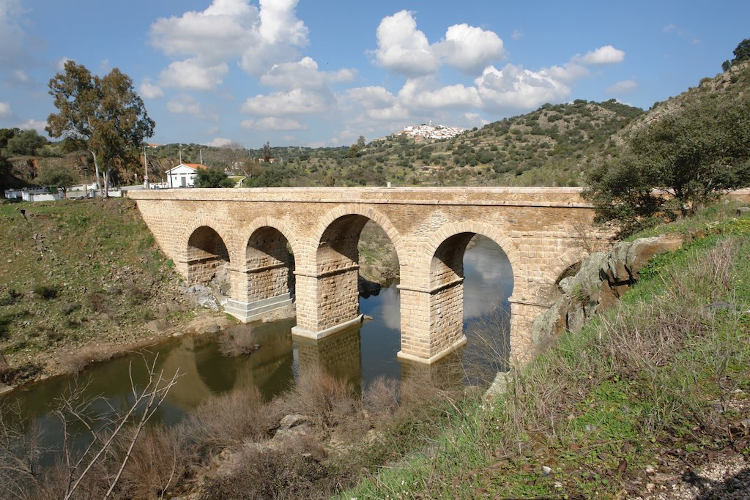
After the border we reached the next and more famous Roman bridge, that of Alcantara.
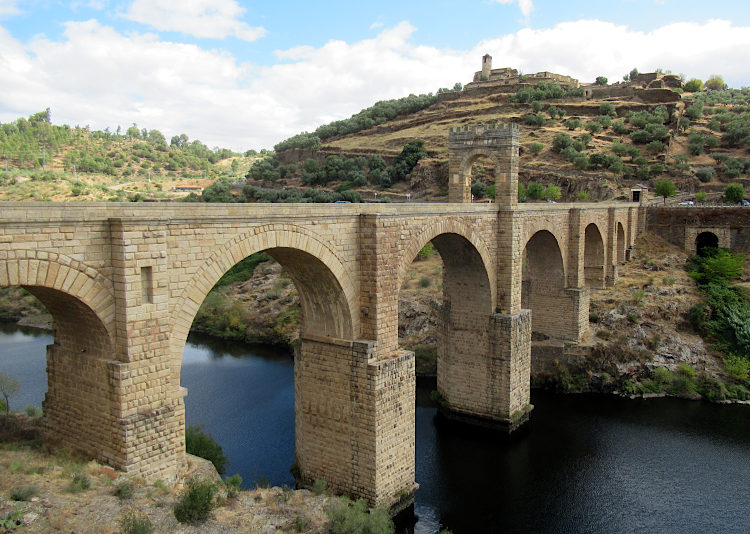
We stopped here for lunch at the Restaurante Gundín but not before having a quick exploration of the town. Unfortunately the Centro de Interpretación Tajo Internacional was closed. We did see the impressive main church, the Parroquia Santa María de Almocovar but it was a shame that the area looked rather run down. We couldn’t help feeling with a bit of tlc and a cafe or two, the centre of the town could be made very attractive.
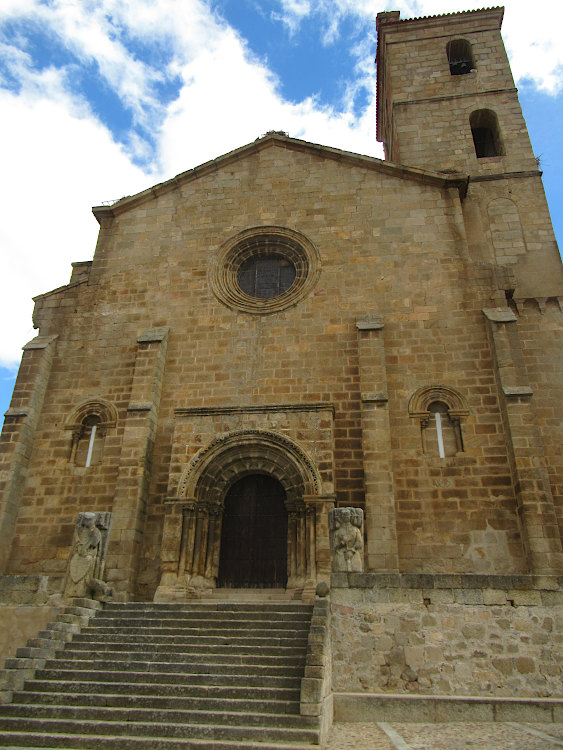
From here we drove on to Merida and to our hotel, the Hotel Ilunion Mérida Palace right in the centre of town on the attractive Plaza de Madrid. There were a number of cafes in the square and they were all pretty busy when we arrived in the early evening.
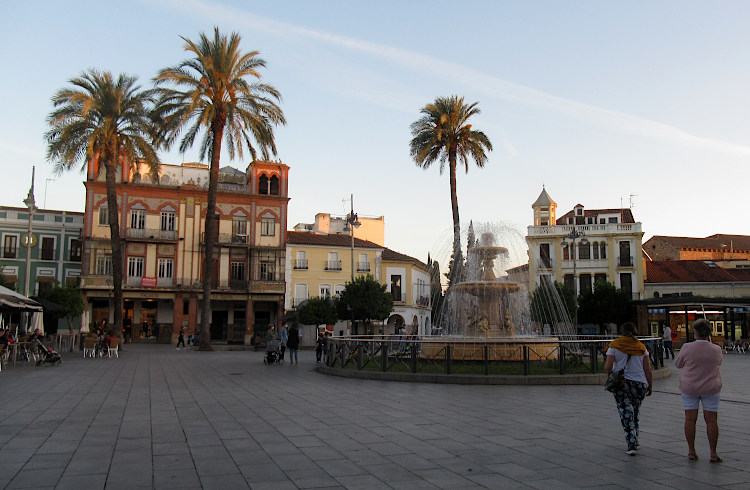
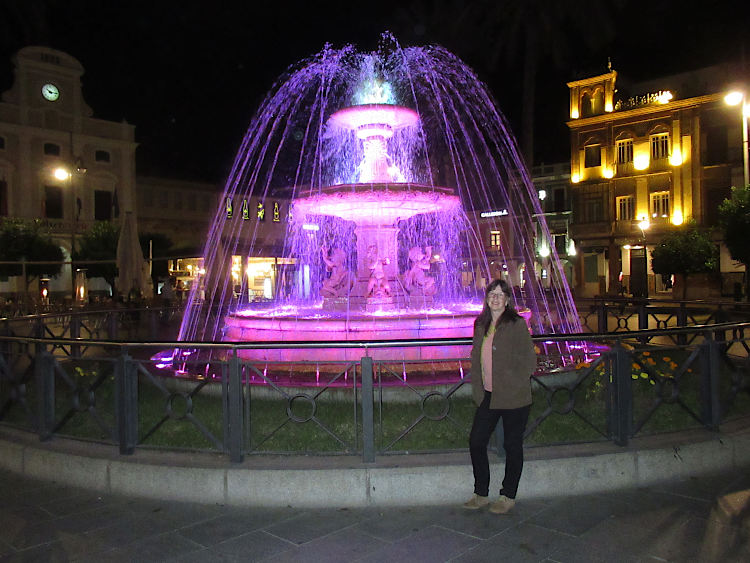
The following day we were up early and off to explore Zafra, a nearby town. It was a quick 30 mins along the motorway. Although in summer it is quite a touristy place, in October it was very quiet as we explored the pretty streets. There are a few museums but as it was a Monday they were all closed.
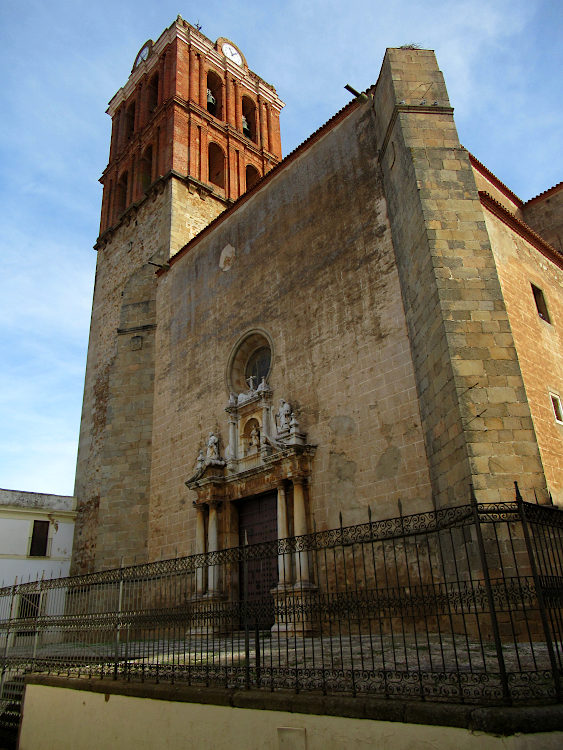
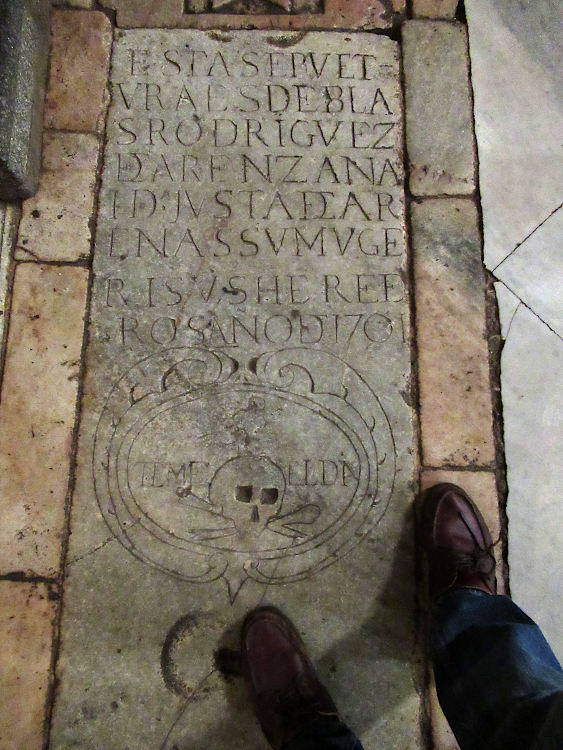
Inside the church were a number of tombstones from the 18th Century all decorated with rather gruesome skulls and crossbones.
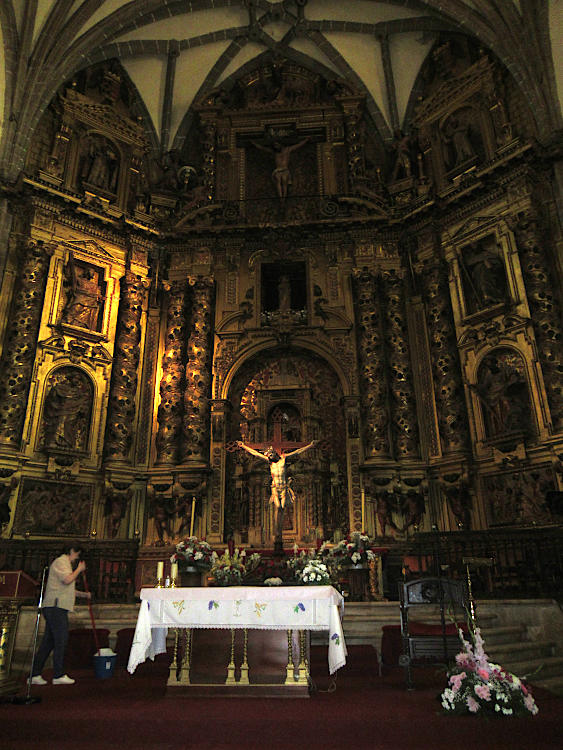
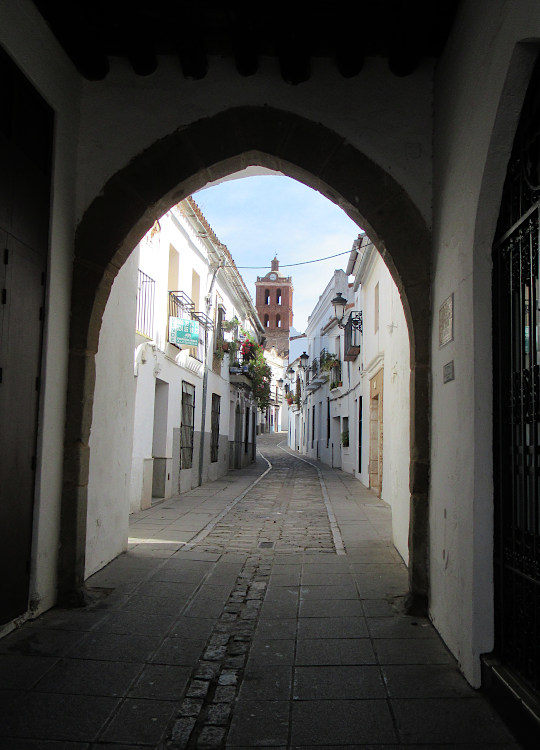
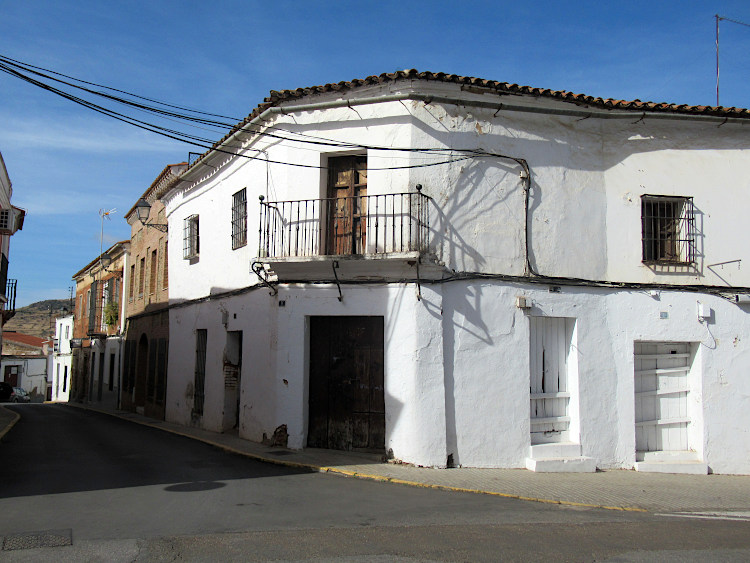
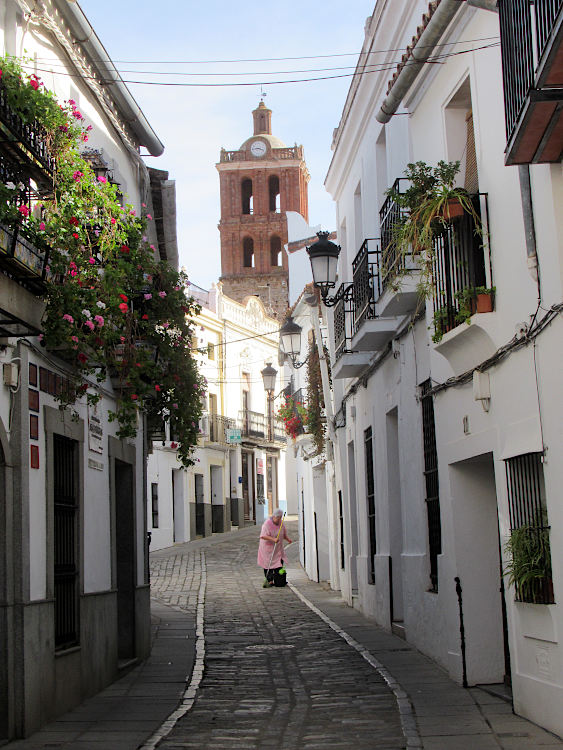
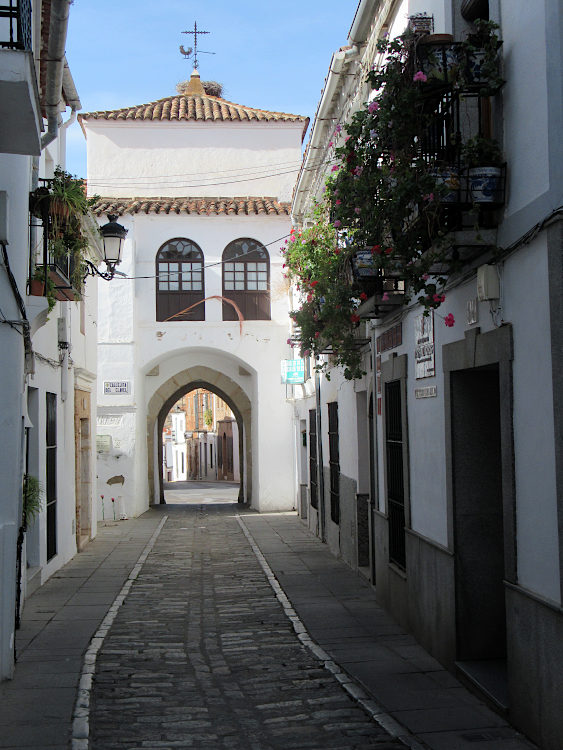
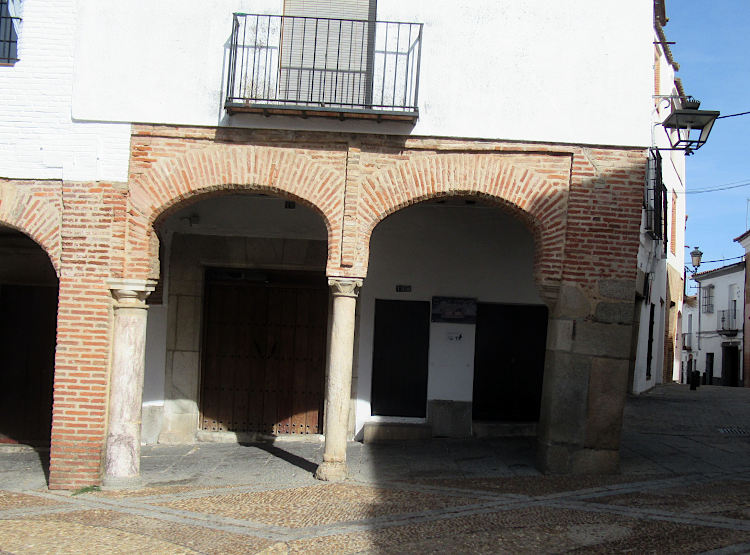
For lunch we headed back to Merida. Jackie wanted to go to the Tabula Calda restaurant as it came highly recommended, they had a number of vegetarian options and they grew most of their own veggies. We weren’t disappointed.
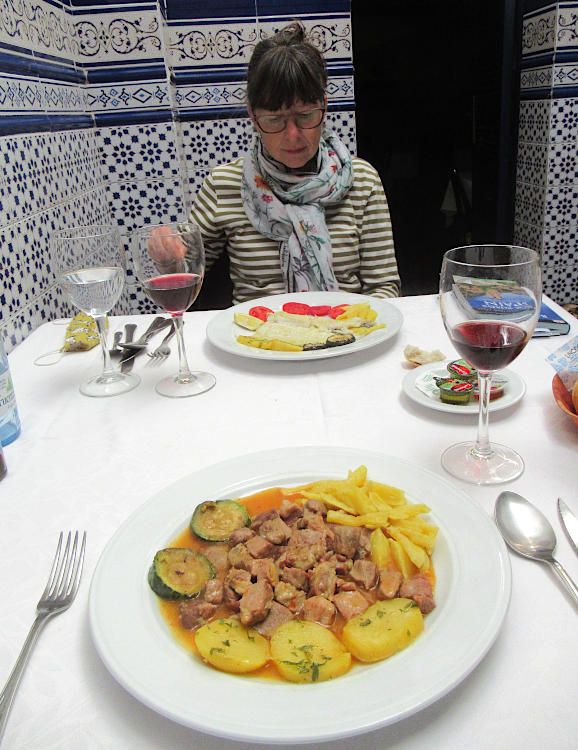
In the afternoon we did our proper exploring of Merida, most notably the famous Roman ruins. Of course highlights included the Temple of Diana, the amphitheatre and the theatre (the first the site of gladiatorial contests, the latter for thespian pursuits.)
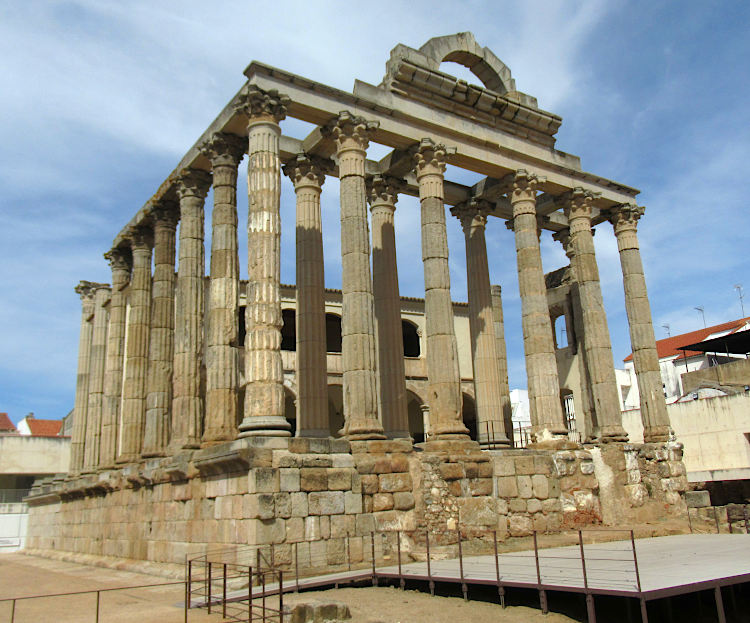
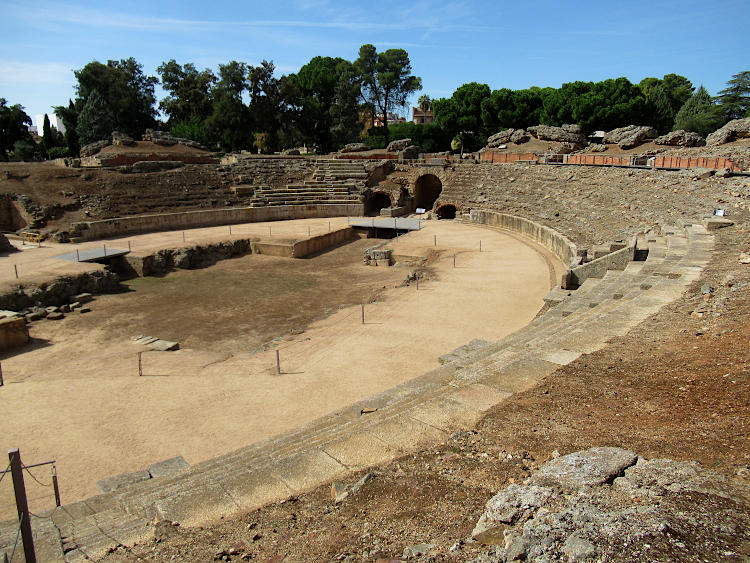
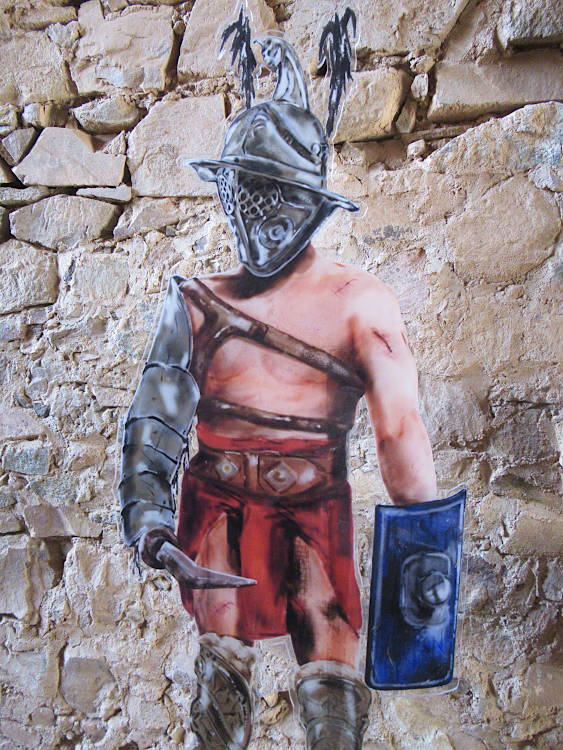
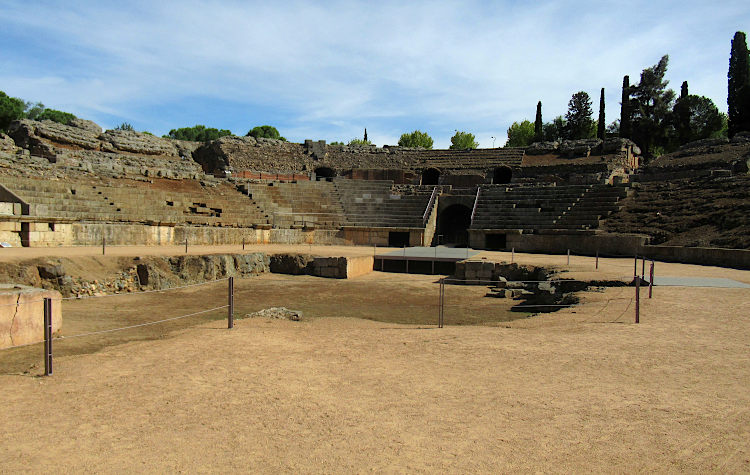
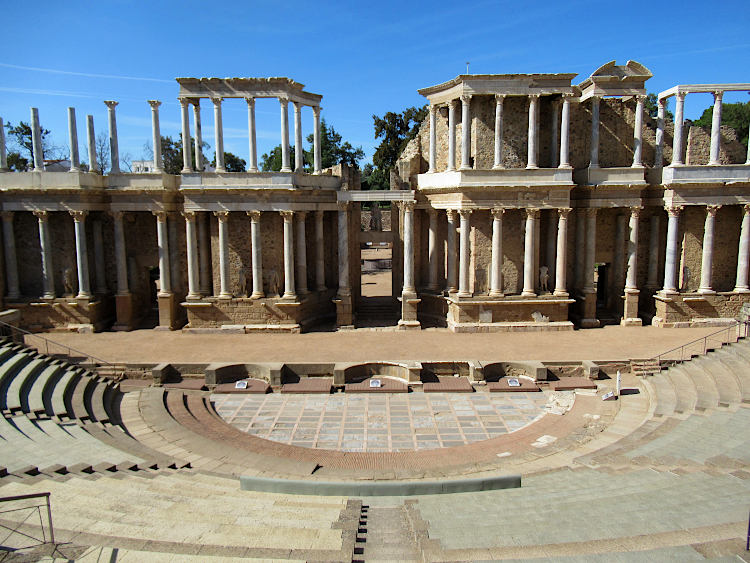
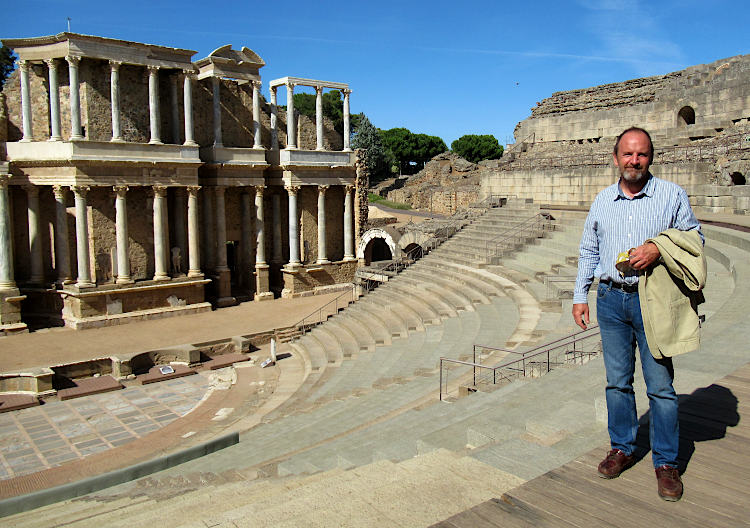
We also saw the House of Mithraeum which was a little disappointing as we could only just see the much vaunted mosaics – probably due to the height of the sun as the link goes to a site with excellent photos. It was interesting to find out that the ruins were only discovered when they were digging for a new hospital outside the city walls. One wonders how many Roman treasures remain buried under the town. Interestingly the name Mithraeum is quite common in Roman ruins and refers to a Mithraic temple, so I’m not sure what it means here, as it just seems to be a regular house.
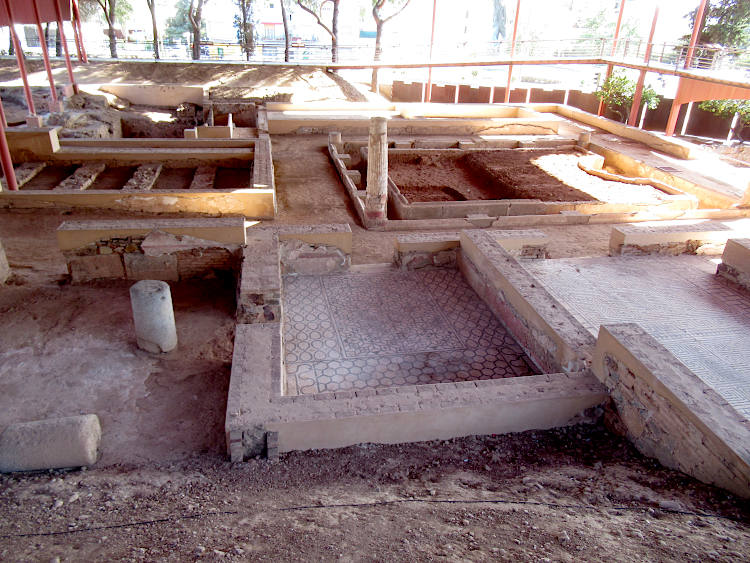
By this time it was actually getting surprisingly hot so we headed back to the hotel, past the Bullring, but not before visiting one last site – the Alcabazar. Although there were Roman ruins within the site, it was actually mainly built by the Muslims, in fact by Abderramán II in 835 AD. It is the oldest preserved Muslim defensive fortress in the Iberian Peninsula. The best part of it was a cistern which was fairly recently excavated. Underneath the old mosque was a stairway down to the water – this was water from the neighbouring Guadiana river and actually contained some goldfish! It incorporated a Roman lintel which I thought was quite interesting.
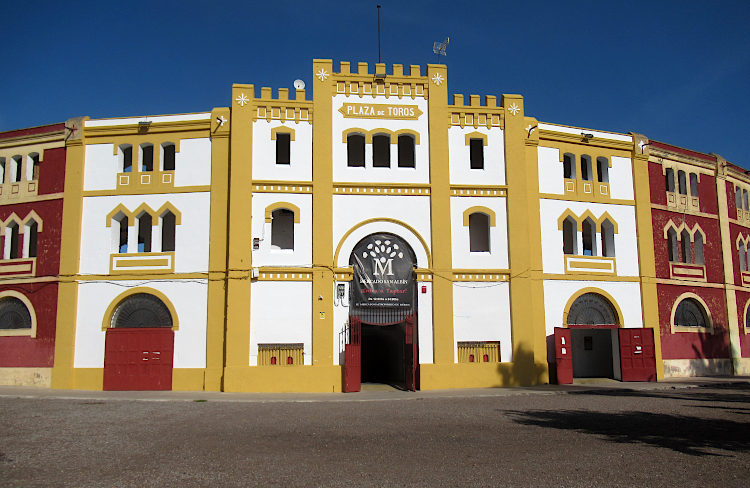
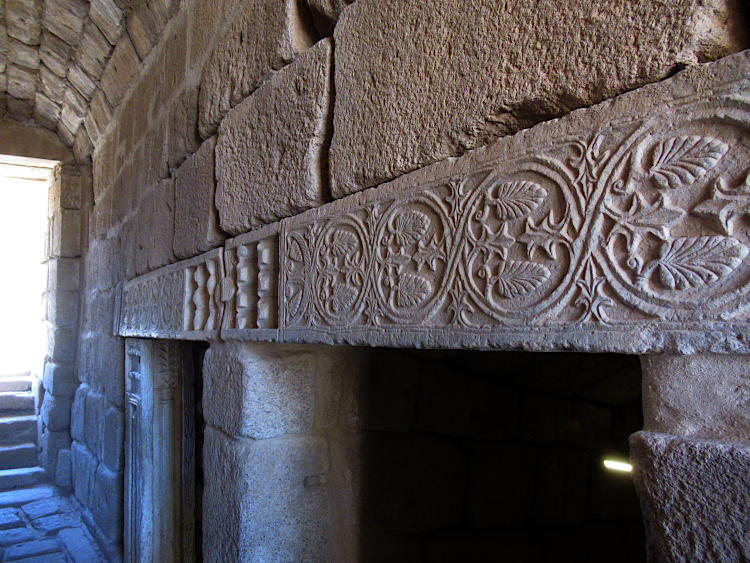
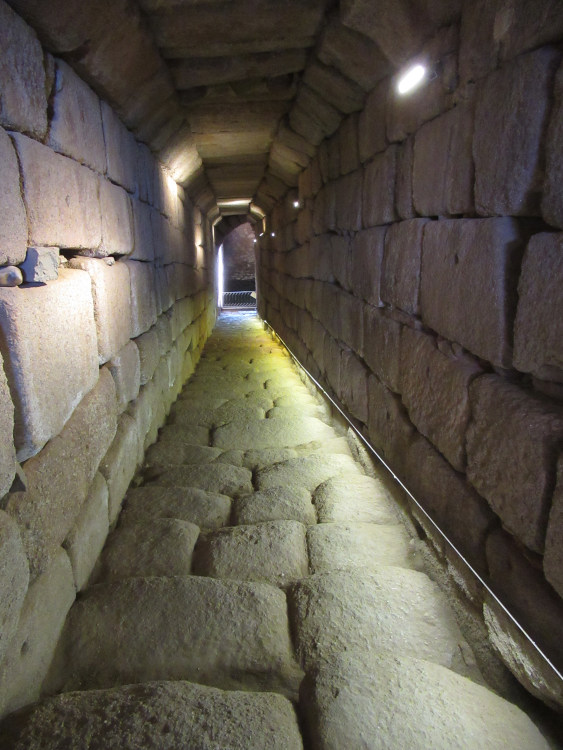
The following morning we saw the last thing on the list, the much vaunted Museo Nacional de Arte Romano. I have to say I was rather disappointed. The building itself was quite impressive, far more so than the exhibits and there were no descriptions in English. I believe they had removable cards on the walls for visitors to read as they walked through the galleries but they were taken away because of COVID. They said they had the guide in English on a QR code but I couldn’t get it to work on my phone. No doubt my fault at being rather behind the times with QR codes – I struggled just as badly when restaurants said their menus were also on QR codes. Why couldn’t they just have a chalk board like in the old days?
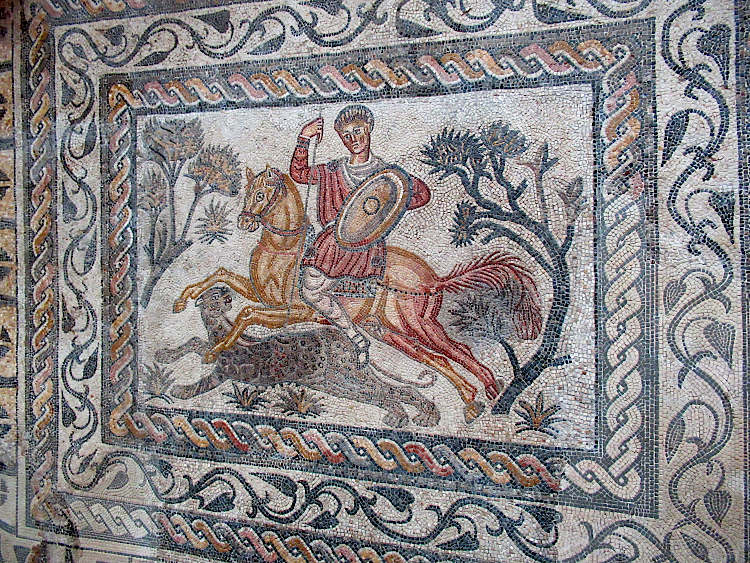
I finish the section on Merida with something more uplifting – the view from our hotel room – of the local church (Santa Iglesia Catedral Metropolitana de Santa María la Mayor if you are interested) which had an occupied white stork nest. I’m not sure why it was still here as most of them had already left for their winter homes in Africa.
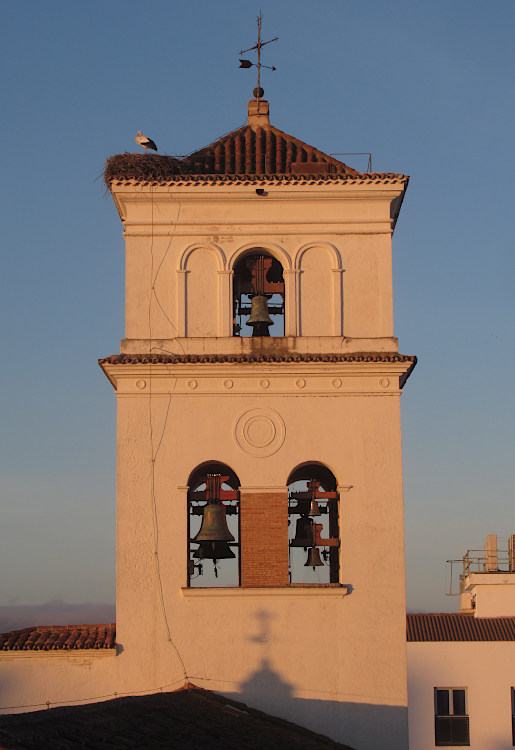
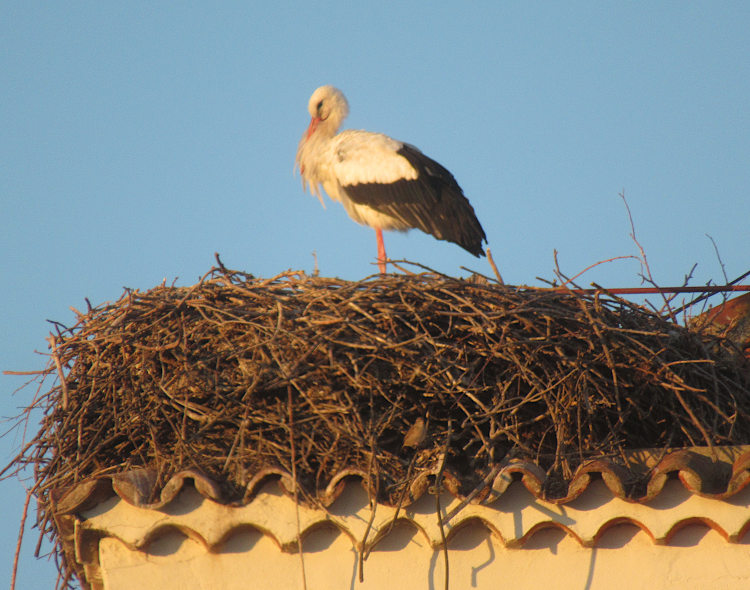
So we said goodbye to Merida and headed for home in Portugal. We took a different way back, to the border town on Elvas and its amazing aqueduct.
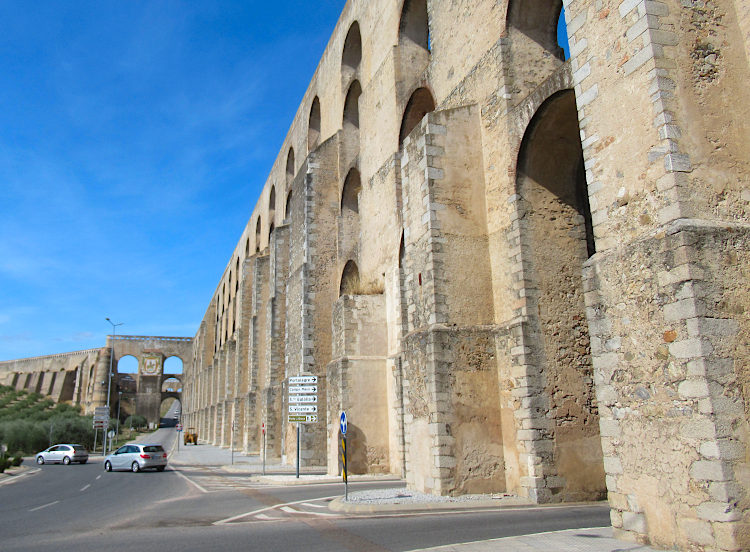
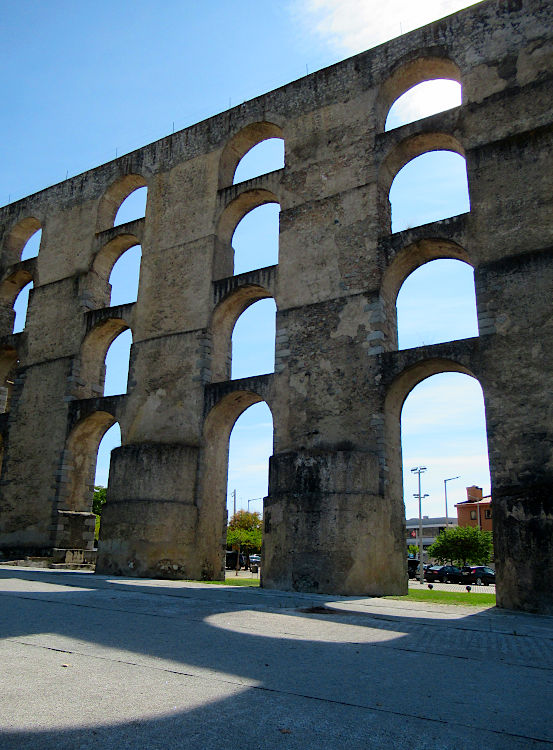
We parked by the aqueduct and then headed into this walled city. Again it was pretty hot – but certainly nothing like the 40+ degree temps it gets here in summer. There are a number of interesting churches in the town (as pointed out by the helpful lady in the tourist office) but these were all closed. However the streets were interesting, as was the small castle. We also had a great lunch at the Taberna Xico Maroto on the main square. The best bacalhau we had tasted in Portugal! No mean feat.
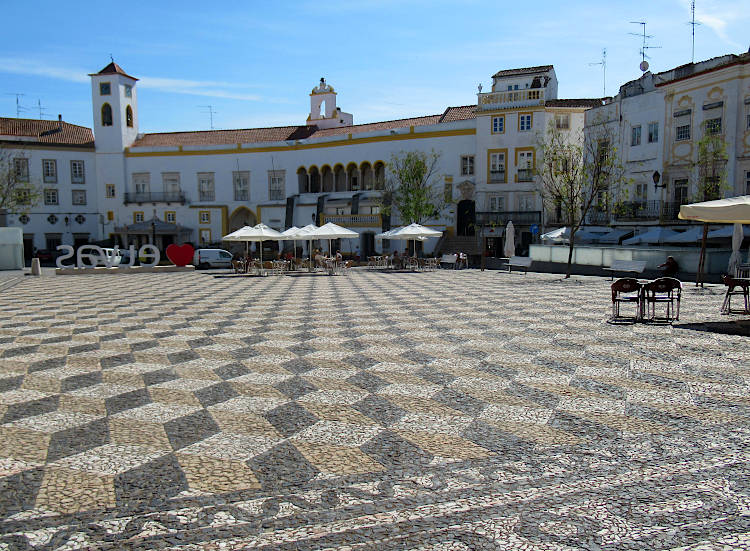
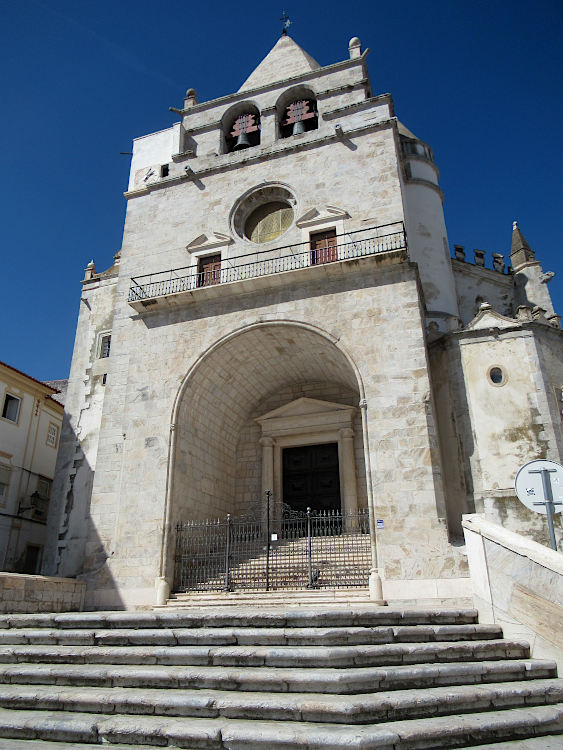

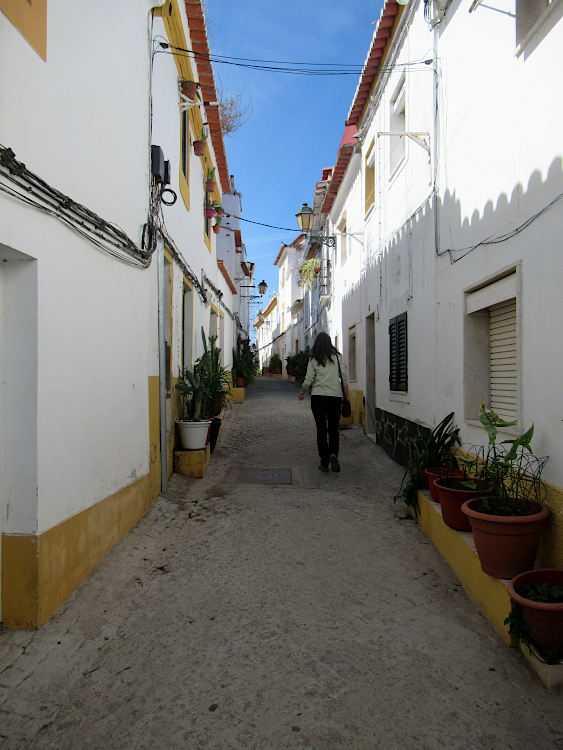
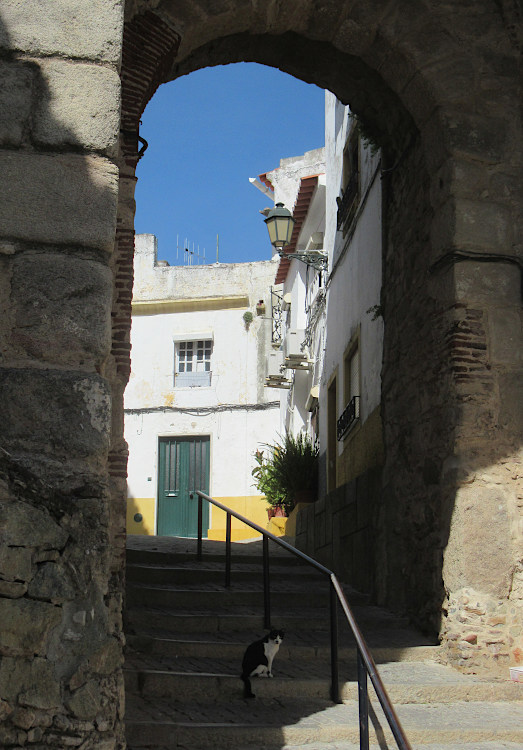
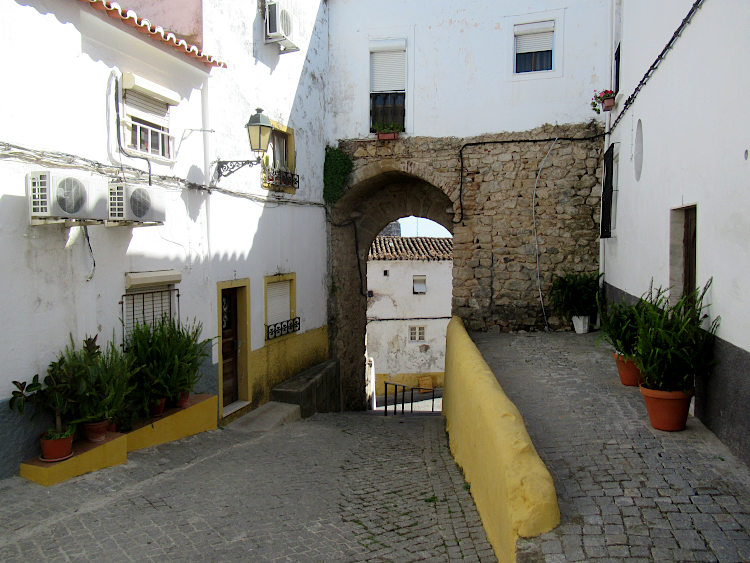
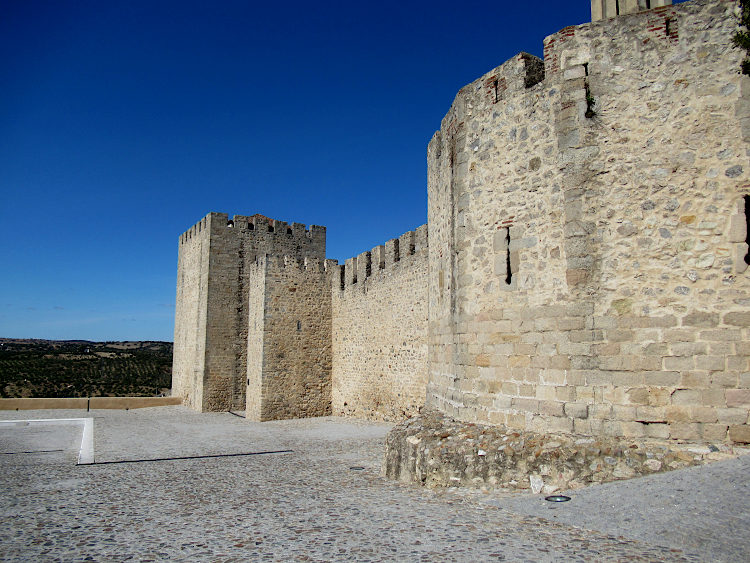
And before we set off for home one more treat – spotting a kestrel.
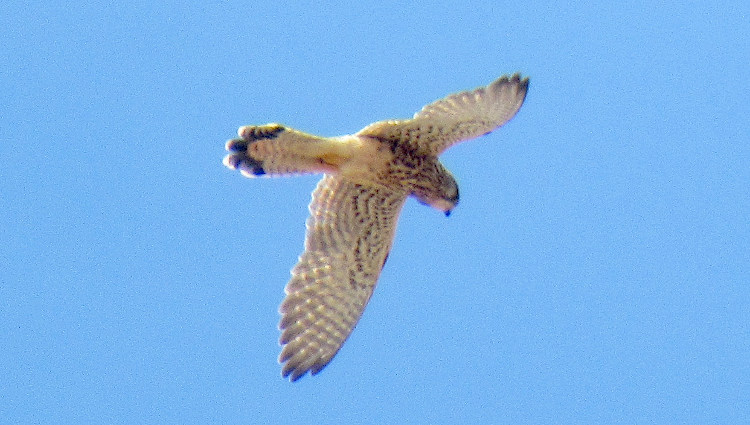
Some more photos here.